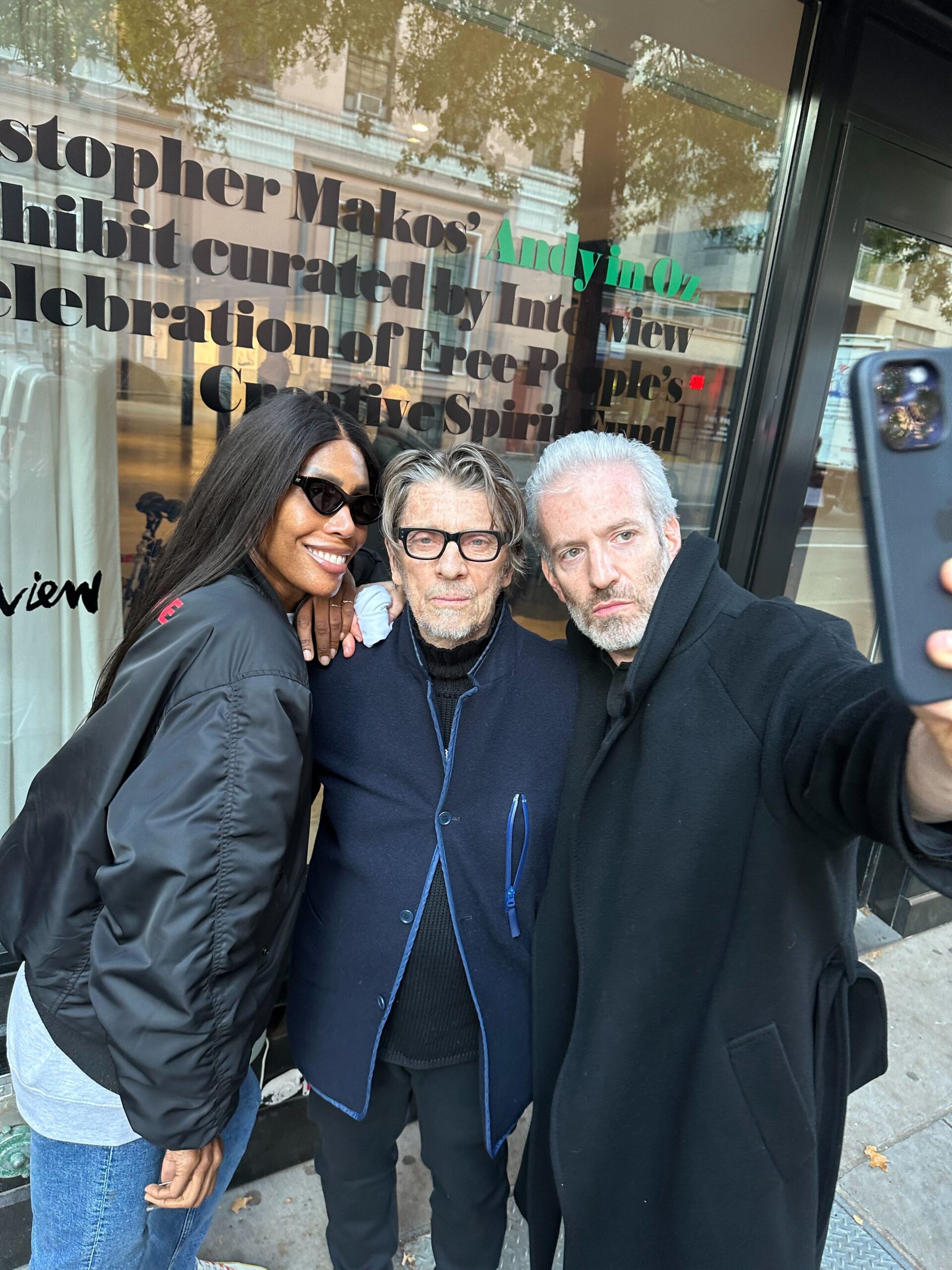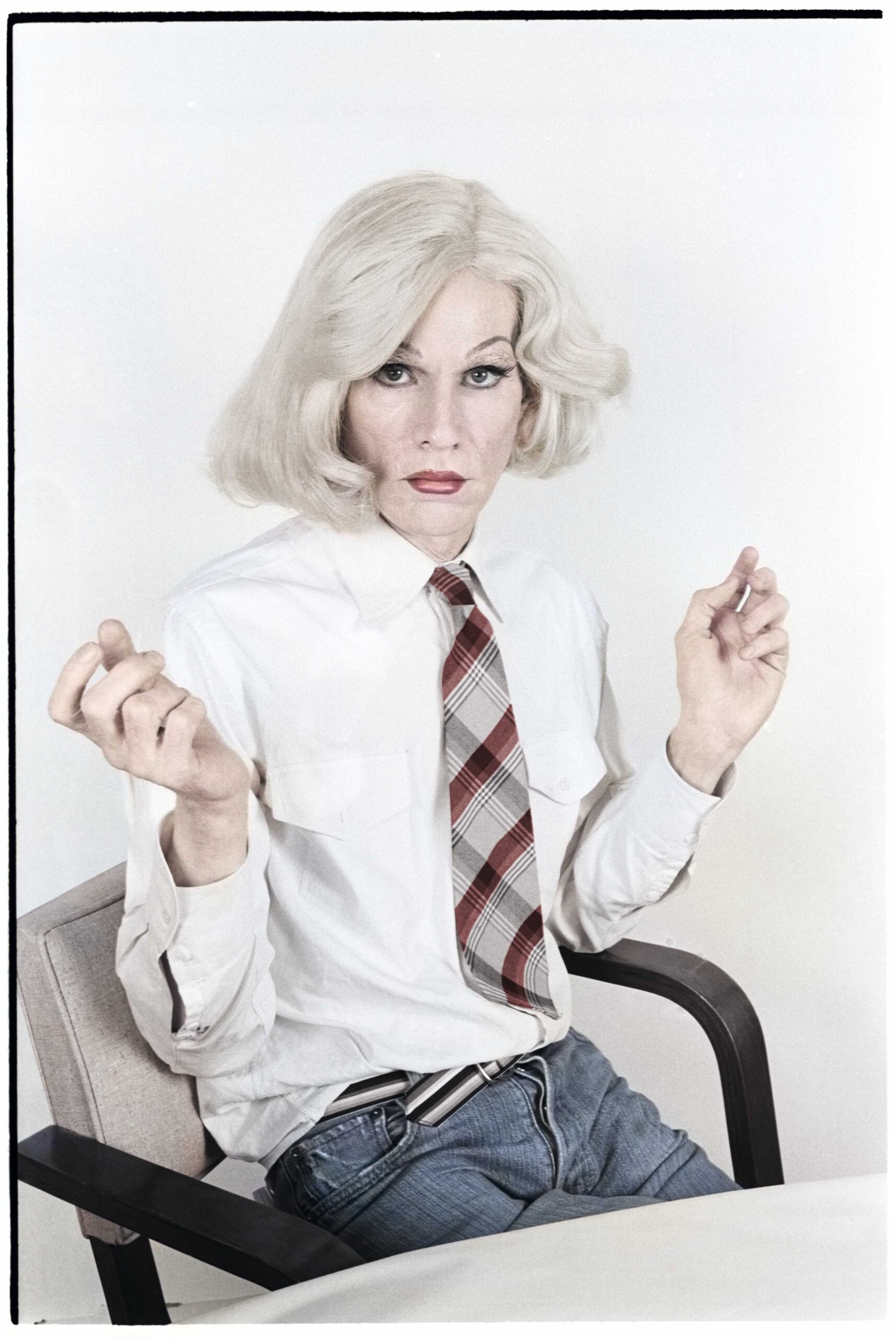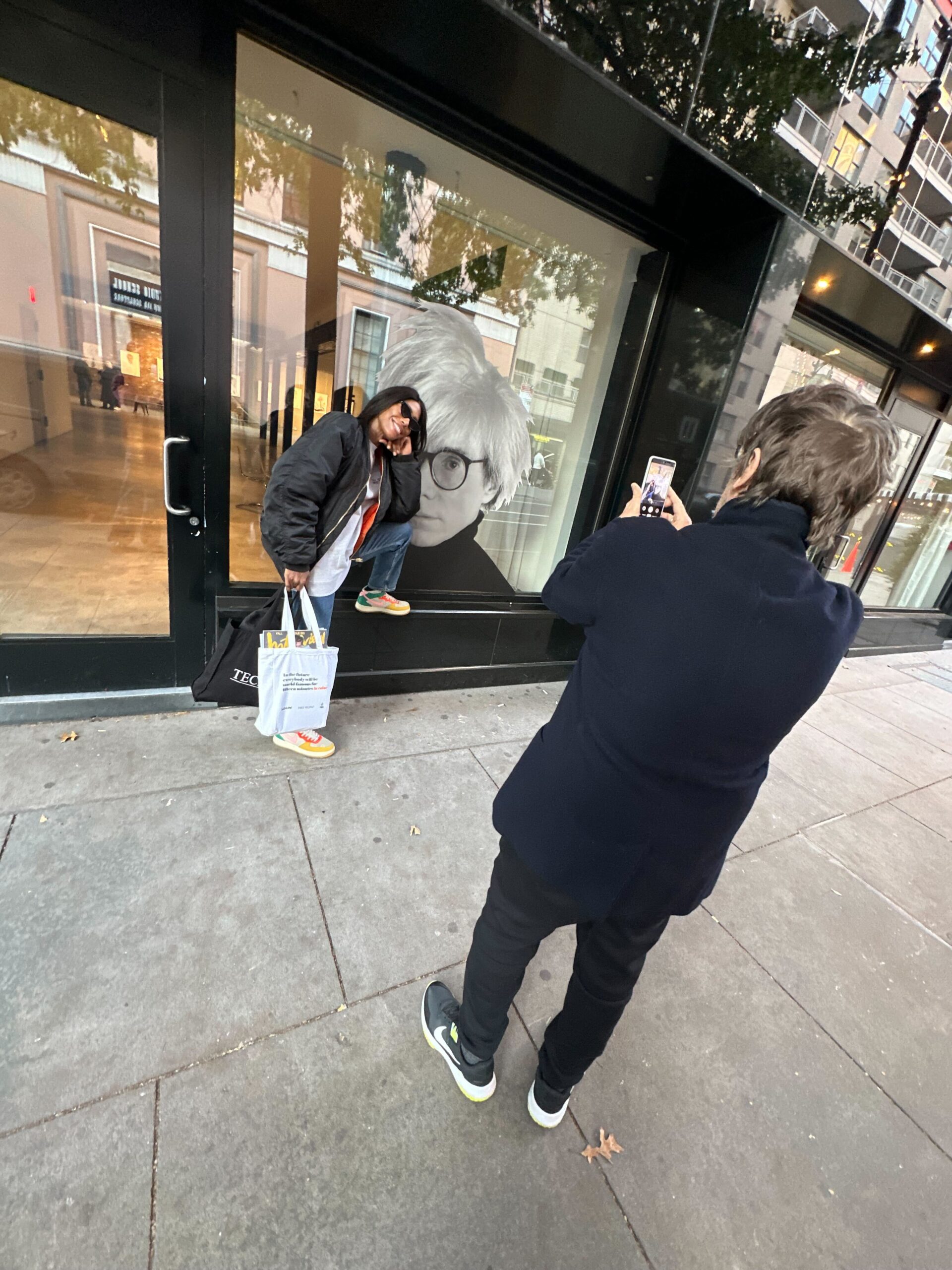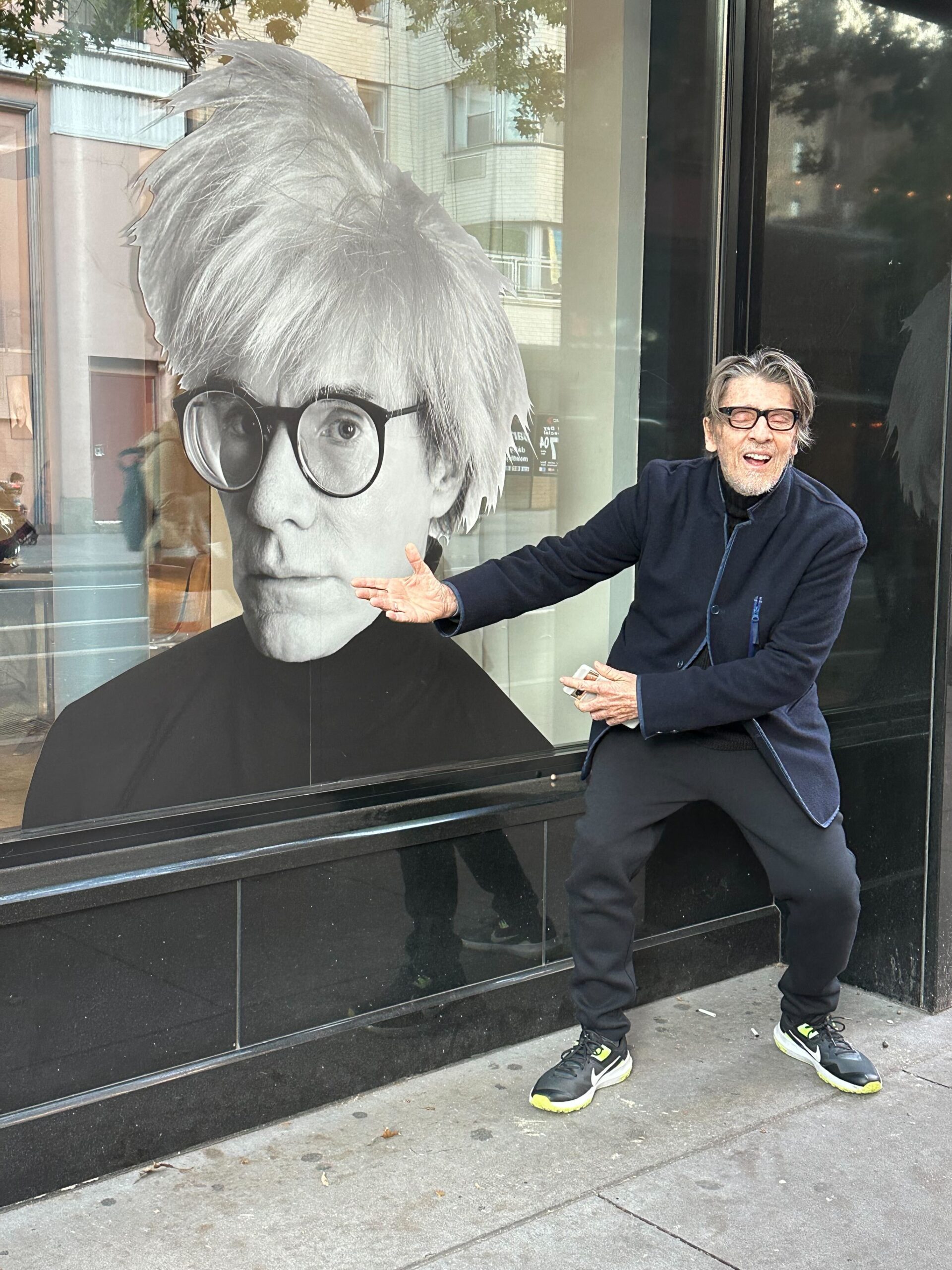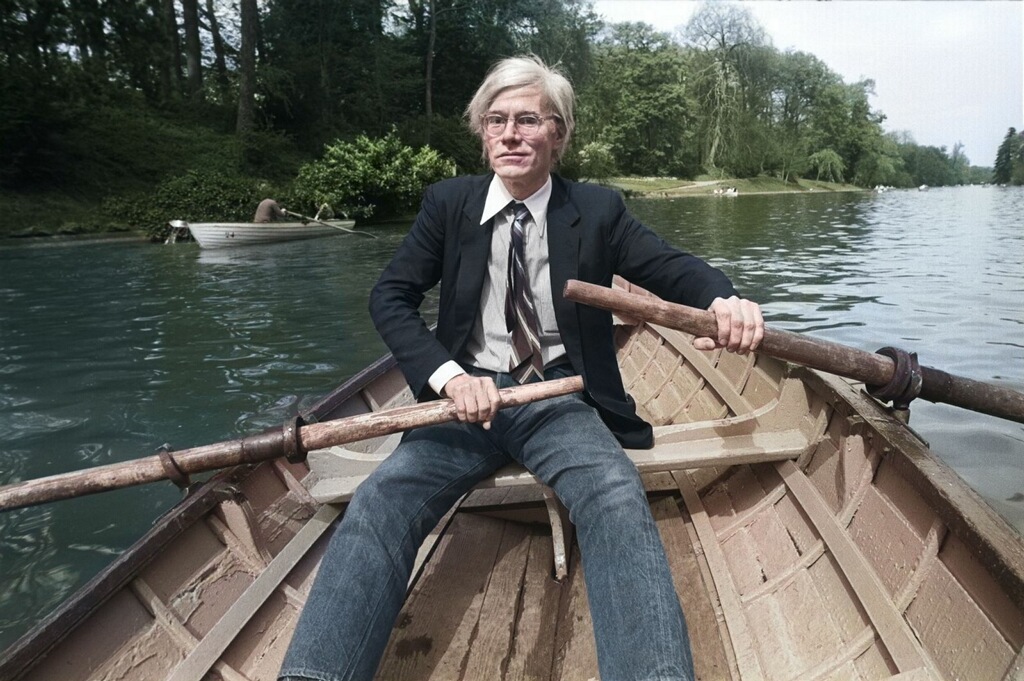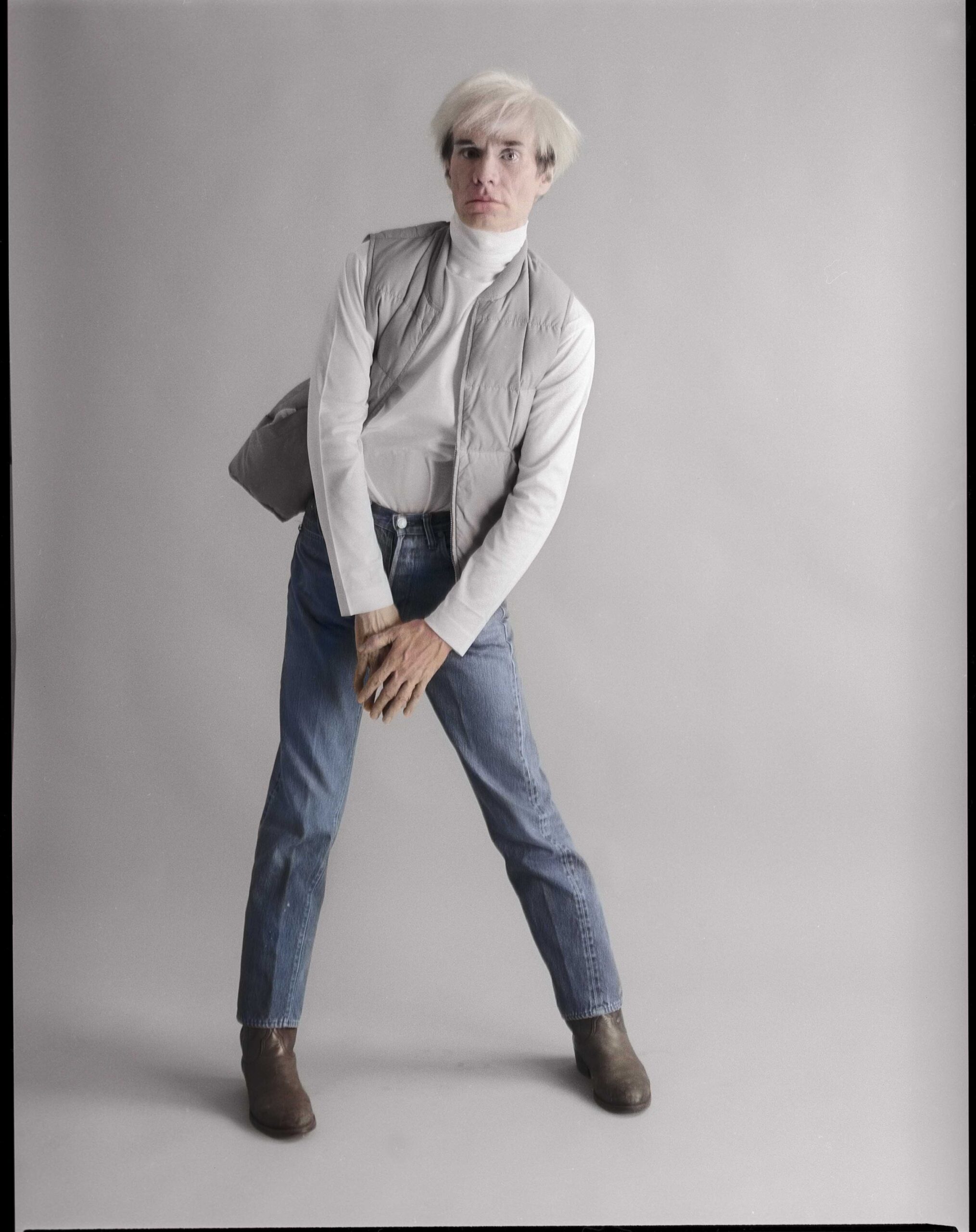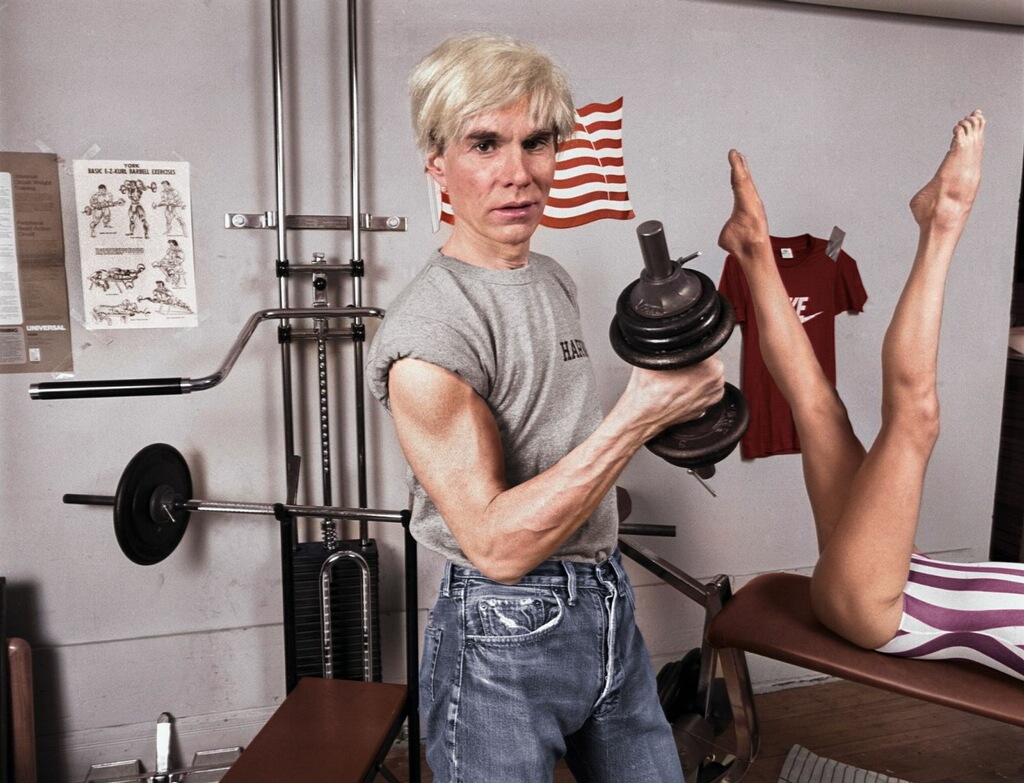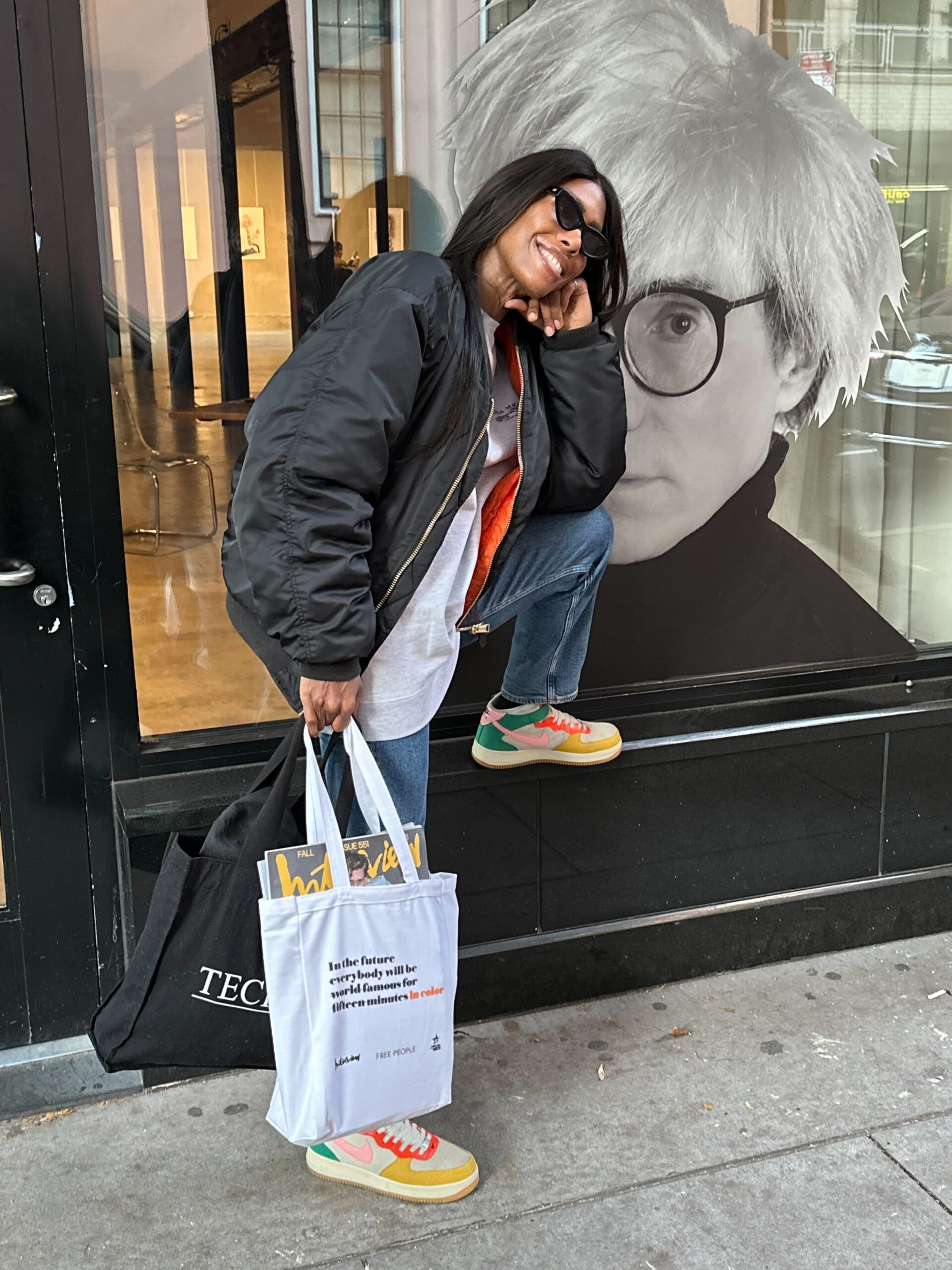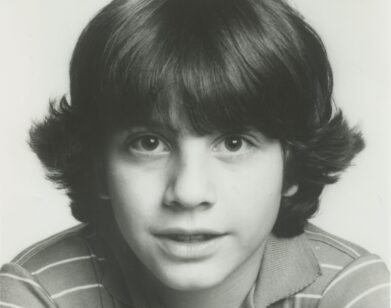warhol
Christopher Makos and Honey Dijon Trade Warhol Lore at Free People’s Andy in Oz Exhibit
In 1976, when Christopher Makos paid a visit to the Whitney Museum of American Art and was introduced by a friend to Andy Warhol, he was mystified, believing he had just encountered a ghost. Nearly a decade prior, Warhol was the victim of a failed assassination attempt, which Makos had misunderstood to be fatal. Yet there was Warhol, very much of flesh and bone, extending the then 28-year-old Makos a delicate hand—and an invitation to join him for an evening out at Max’s Kansas City. Though Makos ultimately declined Warhol’s offer for a nightcap, that initial encounter is emblematic of the kind of work Warhol and Makos would eventually create together in the ensuing years, much of which can be seen in Andy In Oz, a new exhibit curated by Interview and brought to life in partnership with Free People.
In support of the Philadelphia-based brand’s Creative Spirit Fund, a program that promotes art advocacy in early public education, the exhibit showcases Warhol as rendered before Makos’s camera: flexing at the gym; posing against seamless backgrounds in awkward stances; coquettishly batting his eyelashes with a cranberry-colored pout. As Makos describes, the portraits are all heavily contrived in a joint effort to create disparate characters and play with perception and stereotypes. Warhol was not a traditional fashion model, but he became a hunky beefcake in Christopher’s eye. And though the Interview founder was not originally photographed in color all those years ago, the works in the show have been digitally remastered in technicolor to add a colorful new ripple to Makos’ iconic portraiture.
Last Friday, our editor-in-chief Mel Ottenberg popped into the West Village exhibit space, open through November 7th, to walk through the show with Makos and a surprise guest who happened to be passing by, none other than the world-renowned DJ and Warholian scholar herself, Honey Dijon.—MITCHELL NUGENT
———
CHRISTOPHER MAKOS: I’m so thrilled that you’re just passing by. You didn’t know about this?
HONEY DIJON: I literally just went to C.O. Bigelow to get some medication. I was walking down 8th Street and I was like, “Makos?” This is a New York moment.
MEL OTTENBERG: For all of us.
MAKOS: So we were talking about Rodrigo Vijande, the Spanish art dealer’s son, who is making a documentary about all of those people that were part of La Movida. Miguel Bosé, Ágatha Ruiz de la Prada, Bibi Andersen, that crew. And I’m going to show 18 altered Warhol images. It’s playing with the idea of identity.
DIJON: I know the whole story about all of this.
OTTENBERG: I am a total illiterate hick compared to her on all New York things.
MAKOS: So [the drag photos of Andy Warhol] were based on the 1921 Marcel Duchamp Rrose Sélavy Man Ray collaboration. Man Ray was the photographer, and he and Duchamp were both surrealists. There was nothing more surreal at that time.
DIJON: It was playing with identity.
MAKOS: Yeah, and Salvador Dali used to always have these dinners at the St. Regis, and he loved being around transsexuals. He always had the most beautiful—
DIJON: Potassa.
MAKOS: Yeah, Potassa was the star.
DIJON: I actually have a Bill Bernstein Potassa at the end of the night at Studio 54 with Kid Creole. I have that in my house.
MAKOS: Wow, you must be pretty fabulous.
OTTENBERG: Honey’s super fabulous.
DIJON: All the art I collect is from between 1977 and 1985. That’s my goal.
OTTENBERG: You’ve got to go to Chris’s studio.
DIJON: I know, and I’d ask him about his watch.
MAKOS: She knows the story? I hate that you reminded me of this.
OTTENBERG: Wait, tell the story.
MAKOS: I introduced [Jon Gould and Andy Warhol]. Andy and Jed [Johnson] separated, and Andy was moping around, so he asked me to help him find a boyfriend. I remember hearing that so much in my life. Like, the older men asking me, can you help me get a boyfriend?
OTTENBERG: Chris was a great beauty at the time.
DIJON: At the time? Beauty transitions.
OTTENBERG: But is that how you got in with them, because you look so good?
DIJON: He was a good photographer too. Everyone gets in because they’re pretty, that’s how that works.
MAKOS: “Don’t judge a book by its cover.” I’m sorry, no. Before you even get to the pages, everyone looks at the cover.
OTTENBERG: So this old man Andy Warhol’s asking you to find him a new boy.
MAKOS: So I went to the Jacques Morali Can’t Stop the Music opening in 1978.
DIJON: Oh my god.
MAKOS: The party was at Lincoln Center and I met Jon Gould, who was the then VP of promotion or something. And I thought, this is perfect. He’s tall, dark… I didn’t think he was handsome.
OTTENBERG: No, but the look was good.
DIJON: He was very Perry Ellis, that look.
OTTENBERG: Well, he was always very—
DIJON: WASPy.
OTTENBERG: A white boy from Connecticut.
DIJON: A good family. That identity.
OTTENBERG: Straight-presenting, or trying to be. Was it working?
MAKOS: Yeah. Andy fell for it. But my favorite watch at the time was the Jaeger-LeCoultre Reverso watch, which was a super looking watch. He said, if you get me a boyfriend, I will get you the watch. So I got him the boyfriend, and I said, time to pay up. He said, well, nothing’s happened yet. I said, honey, I can only bring them to the waterfall. I can’t make them slurp it up.
DIJON: That wasn’t in the contract.
MAKOS: Well, I have learned since then about my contracts. [Laughs]
OTTENBERG: How did you meet Andy Warhol? How’d you get in there?
MAKOS: In ’76 I met him at the Whitney Museum when they had some retrospective. Dotson Rader, the writer, had taken me.
OTTENBERG: When did you get the idea to do these in color?
MAKOS: Six months ago.
OTTENBERG: You did the colors from memory?
MAKOS: Yeah, absolutely. The jeans were always that color. Andy had that one single tie.
OTTENBERG: That’s the only tie he ever wore. Was it an expensive tie?
MAKOS: No. It was always a shitty tie.
DIJON: I think it’s Brooks Brothers.
MAKOS: You’re absolutely right.
OTTENBERG: The shirt is Brooks Brothers, and the jeans are Levis. Girl, take my job. Honey Dijon is the new editor-in-chief of Interview. [Laughs] So where did you shoot this one?
MAKOS: That was in the back at the Factory at 860 Broadway. Have you been to 860 Broadway?
OTTENBERG: Well, babe, I never went to the Factory there. I was just a baby.
DIJON: This is in Central Park, isn’t it?
MAKOS: No, that’s in the Bois de Boulogne in Paris.
DIJON: Oh, I go jogging there in Paris.
MAKOS: Every major city has this. And it is always that same color water. When we started researching this, we were Googling all the places that we had been. I knew Andy’s skin color, I knew the hair. But when we started to remaster, it’s like taking the Beatles’ early albums and remastering them mid-stereo.
DIJON: I love that one. It’s so good.
OTTENBERG: He is really trying to model. He’s giving Zoli there.
MAKOS: So the story is, when Netflix was doing the Andy Warhol Diaries documentary, they licensed a ton of my pictures. So I had to start looking at them, and although I always said I can’t do any more Warhol books, I realized that I had five or six different Andy modeling shoots for his portfolio. Sony had come to us at the Factory and said, we want you to be a spokesperson. Fred Hughes didn’t know how to price that, so he said, let’s put you as a special booking at Zoli or Ford. So we did these shoots, and this is Andy modeling.
DIJON: This is genius.
MAKOS: It’s all about his hands though. If you look closely, he didn’t know what to do with his hands. He was absolutely awkward. But that book came out, and it’s called Andy Modeling Portfolio.
DIJON: There’s a book of that?
OTTENBERG: Yeah. It came out last year.
MAKOS: It was a fun project because whenever I do my Warhol books, they’re all always chronological. The very first picture I took of him to the very end. The modeling book is the same, down to the last portraits of him where Tom Savini, who does all the horror movies, did Andy as a zombie.
OTTENBERG: Who called you to say Andy wants to get his picture taken?
MAKOS: No one. Nobody ever called on behalf of Andy. There was no assistant. We were always at the Factory or coming back from London or Paris and he’d say, let’s do a photoshoot, or I’d say it.
OTTENBERG: I always meant to ask you, how long did the drag series take? He took the makeup really seriously, you told me before. Who did the makeup?
MAKOS: We had a theatrical makeup person. They took spirit gum and pressed it down and painted it white. So we had a completely white face and then we painted the face.
OTTENBERG: Oh, okay. And I remember you telling me the makeup was very considered. It’s one makeup look, and then—
MAKOS: There are five different wigs.
OTTENBERG: This is the wig that you have in your office, right?
MAKOS: Right.
OTTENBERG: Were they all from 14th Street?
MAKOS: [Laughs] None of them were 14th Street. It was like, Jean Pierre on 57th Street.
DIJON: Those are expensive.
OTTENBERG: Listen, I can look like a zillion dollars in a 14th Street wig. Maybe Andy Warhol couldn’t.
MAKOS: [Laughs] Number one, 14th Street wasn’t as fancy.
OTTENBERG: 14th Street’s actually too fancy now. The wigs are too tasteful. You have to go to Abracadabra now for a tacky wig.
DIJON: It’s not like a Sprouse wig.
MAKOS: My new neighborhood, NoMad, it’s full of those wigs.
OTTENBERG: What was the gym that you guys shot that picture in?
MAKOS: That was at 860 Broadway. That was Lydia, who was his trainer, and this was like the Peloton of the time.
OTTENBERG: That’s the chicest gym equipment of the time.
MAKOS: Yeah, it was like one weight and one pulley and some free weights and that was it. But he had some muscles there.
OTTENBERG: I need to rip this picture off for Interview.
DIJON: Was the fitness craze starting yet? Because that’s before [Jane] Fonda, right?
MAKOS: The real fitness thing started with David Barton.
OTTENBERG: But what was happening in the seventies? Everyone had such fit bodies.
MAKOS: Actually, I think it really started with the advertising campaigns of underwear. Once GQ Magazine and Bruce Weber and Calvin Klein got out, it became okay for a guy to look at another guy’s body.
OTTENBERG: What year is this?
DIJON: Early eighties.
OTTENBERG: And when was the drag series?
MAKOS: ’81. I was part of the Factory from ’76 to ’86, ten years, and then Andy died. So I was there during the golden years.
DIJON: This is such a treat to me.
OTTENBERG: Chris took a really sick picture of Debbie Harry in his book, White Trash, which I highly recommend. That is how I got really obsessed with Chris Makos. I knew of Chris Makos from The Andy Warhol Diaries, which I first read when I was 13.
MAKOS: Wow.
DIJON: I’m going to go to the store now.
OTTENBERG: Okay, we can stop.

